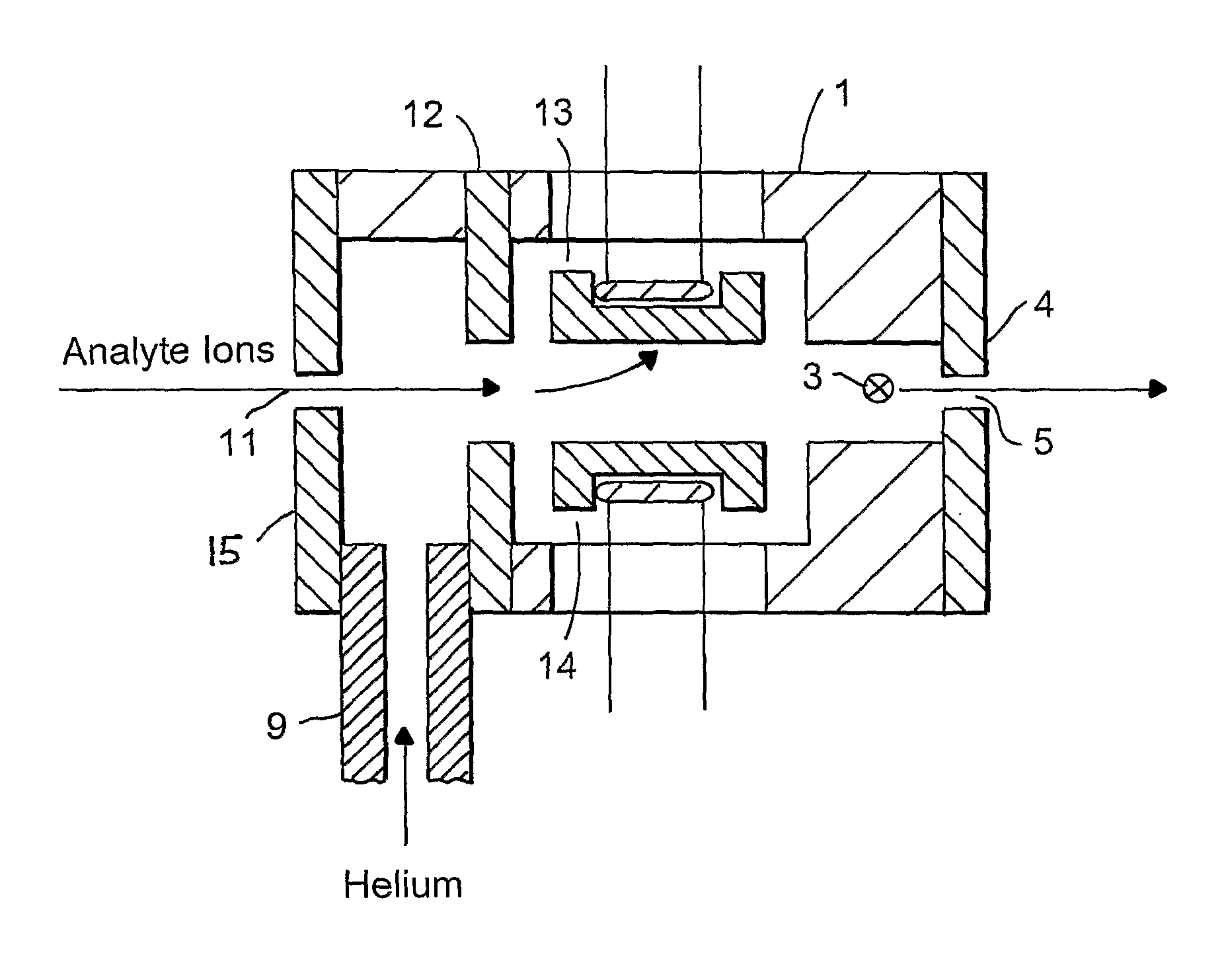Ion source with device for oxidising a sample
a sample oxidisation and ion source technology, applied in the direction of isotope separation, particle separator tubes, instruments, etc., can solve the problems of difficult or impossible to determine anything very useful from the molecular ion isotope, and the measurement of the mass of an organic compound is rarely adequate information
- Summary
- Abstract
- Description
- Claims
- Application Information
AI Technical Summary
Benefits of technology
Problems solved by technology
Method used
Image
Examples
Embodiment Construction
[0174]An embodiment of the present invention will now be described. FIG. 1 shows the number of possible elemental compositions that comply with the valency laws that are possible for an organic compound having a mono-isotopic mass of 250.000 Daltons. Column A tabulates the minimum and maximum number of atoms of the elements carbon, hydrogen, oxygen, nitrogen, sulphur, phosphorous, fluorine, chlorine and bromine that have been considered as being potentially present in the molecule. The number of elemental compositions that have a monoisotopic molecular mass that falls within the indicated mass search window expressed in milli-Dalton (mDa) and in parts per million (ppm) are also shown. In column A, the monoisotopic mass of molecules with between 1 and 20 carbon atoms and up to 40 hydrogen atoms, up to 10 oxygen atoms, up to 10 nitrogen atoms, up to 10 sulphur atoms, up to 10 phosphorus atoms, up to 10 fluorine atoms, up to 10 chlorine atoms and up to 10 bromine atoms has been calcula...
PUM
 Login to View More
Login to View More Abstract
Description
Claims
Application Information
 Login to View More
Login to View More - R&D
- Intellectual Property
- Life Sciences
- Materials
- Tech Scout
- Unparalleled Data Quality
- Higher Quality Content
- 60% Fewer Hallucinations
Browse by: Latest US Patents, China's latest patents, Technical Efficacy Thesaurus, Application Domain, Technology Topic, Popular Technical Reports.
© 2025 PatSnap. All rights reserved.Legal|Privacy policy|Modern Slavery Act Transparency Statement|Sitemap|About US| Contact US: help@patsnap.com



